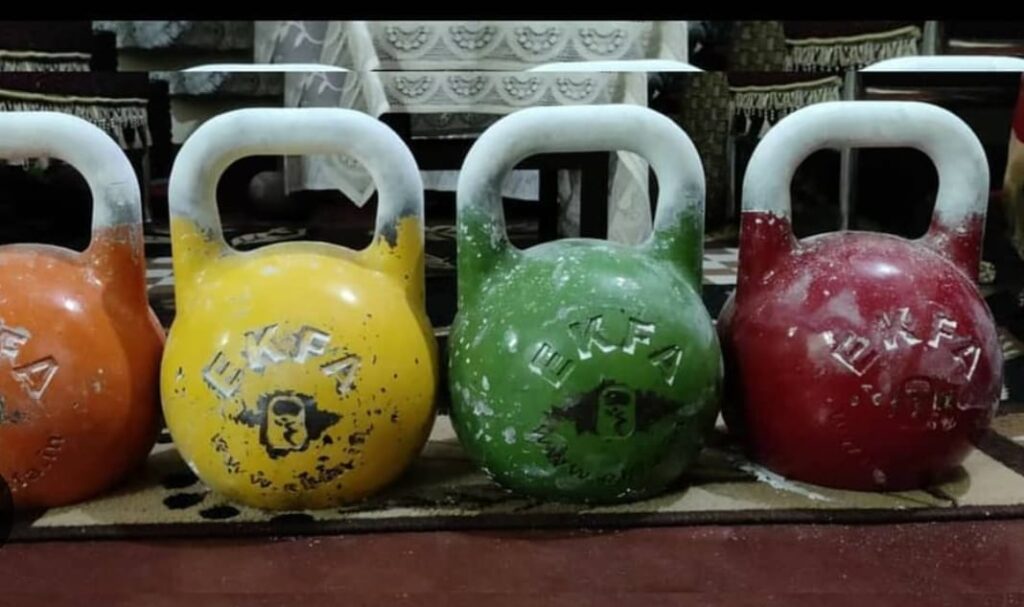Kettlebells have long been celebrated for their versatility and effectiveness in strength and conditioning training. Over the past 10 years, our focus has been on harnessing the full potential of kettlebell workouts in various fitness settings, from clubs and gyms to corporate environments. Despite their proven benefits, we’ve observed that many gym owners invest heavily in high-end interiors and non-essential machines but hesitate to allocate resources toward selecting the right kettlebells. This hesitation often results in suboptimal workouts and underutilized equipment.
In this article, we’ll explore the different types of kettlebells available on the market, their respective merits and demerits, and offer guidance on choosing the best kettlebells for your gym.
Types of Kettlebells
- Cast Iron Kettlebells
- Merits:
- Durability: Cast iron kettlebells are highly durable and can withstand rigorous use.
- Affordability: They are generally less expensive than other types.
- Standard Design: Often used in professional settings due to their traditional design and consistency in weight.
- Demerits:
- Comfort: The handles may not be as comfortable for prolonged use.
- Finish: Can have a rough finish that might cause discomfort or wear on the hands.
- Competition Kettlebells
- Merits:
- Uniform Size: Regardless of weight, these kettlebells have the same size, allowing for smooth transitions between weights.
- Precision: Designed for competitive lifting, they offer consistency in size and balance.
- Ergonomic Handle: Usually features a smooth, well-finished handle for comfort during high-repetition exercises.
- Demerits:
- Cost: Typically more expensive due to the precision and design.
- Limited Use: Best suited for specific training and competitions, may not be as versatile for general gym use.
- Adjustable Kettlebells
- Merits:
- Versatility: Allows for multiple weight settings in a single kettlebell, saving space and cost.
- Convenience: Ideal for users who want to perform a variety of exercises without needing multiple kettlebells.
- Demerits:
- Complexity: The mechanism to adjust weights can be cumbersome and might affect the smoothness of the workout.
- Durability: Moving parts might wear out over time, potentially affecting the kettlebell’s performance.
- Rubber-Coated Kettlebells
- Merits:
- Floor Protection: The rubber coating helps protect floors and reduces noise.
- Comfort: Generally provides a more comfortable grip and less impact on hands.
- Demerits:
- Cost: Often more expensive than plain cast iron kettlebells.
- Durability: Rubber coating may wear off over time or get damaged.
- Vinyl-Coated Kettlebells
- Merits:
- Aesthetics: Available in various colors and can make a gym look more appealing.
- Comfort: Smooth coating provides a comfortable grip.
- Demerits:
- Durability: Vinyl may not be as durable as rubber or cast iron and can deteriorate with heavy use.
- Cost: Can be more expensive than basic cast iron kettlebells.
Choosing the Right Kettlebells for Your Gym
- Assess Your Needs: Consider the types of workouts you plan to offer and the range of weights required. If your focus is on general strength training and conditioning, a range of cast iron kettlebells might be sufficient. For specialized training or competitions, investing in competition kettlebells could be beneficial.
- Consider Your Budget: While investing in high-quality kettlebells is important, balance cost with the needs of your gym. Cast iron kettlebells offer durability at a lower cost, while competition or adjustable kettlebells might require a higher investment.
- Evaluate Space and Maintenance: If space is limited, adjustable kettlebells might be a practical choice. For gyms prioritizing aesthetics and floor protection, rubber-coated kettlebells could be more suitable.
- Focus on Quality: Opt for kettlebells with well-finished handles and a balanced design. Poor-quality kettlebells can lead to discomfort and may not withstand rigorous use, ultimately impacting the effectiveness of your workouts.
Conclusion
Investing in the right kettlebells is crucial for maximizing the benefits of kettlebell training in your gym. By understanding the different types of kettlebells and their respective merits and demerits, you can make informed decisions that enhance the quality of your workouts and provide a better experience for your members. Prioritizing high-quality, well-suited kettlebells will not only improve workout outcomes but also demonstrate a commitment to providing top-notch training equipment.

